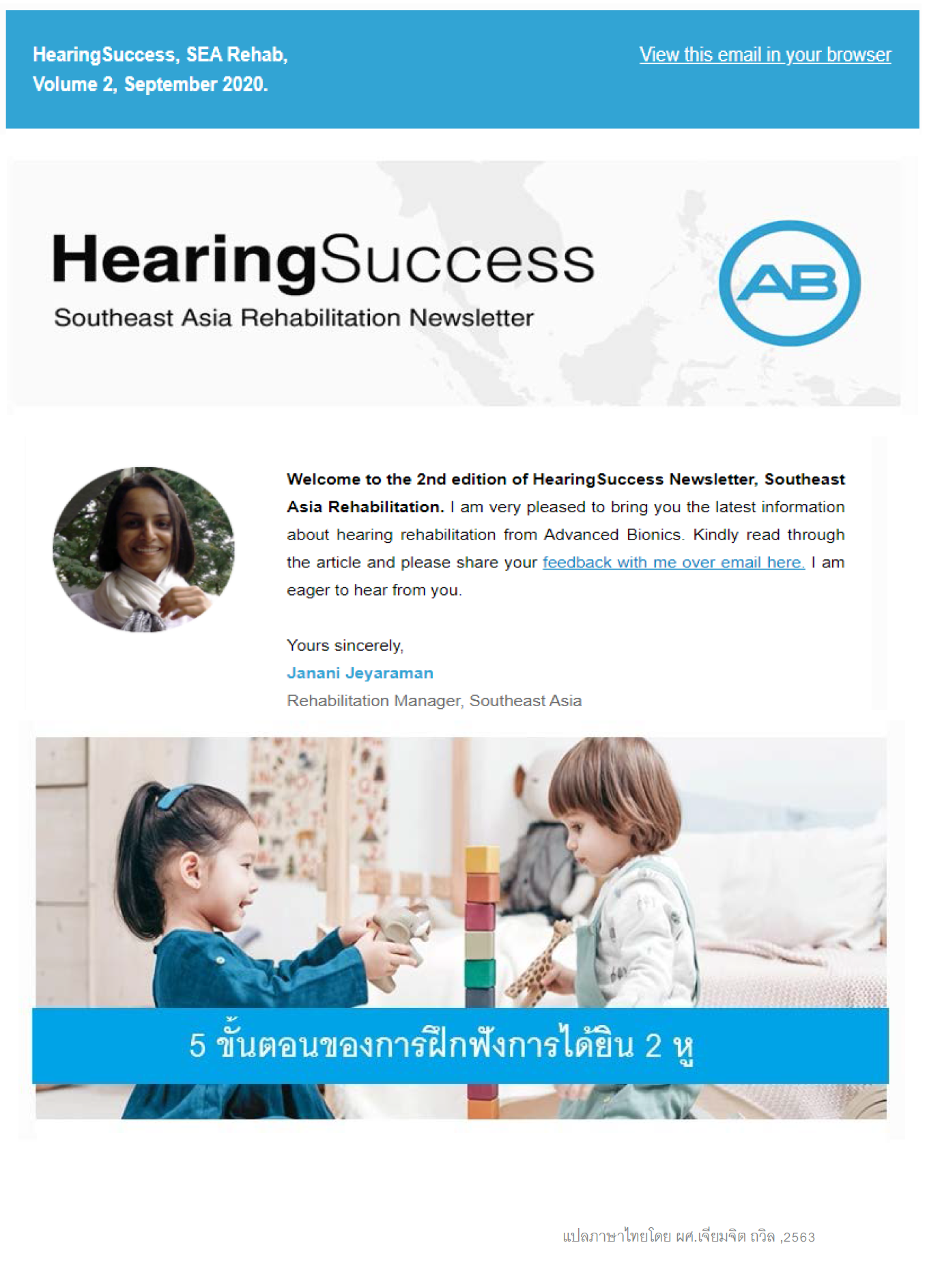'2-Ear Hearing' (binaural hearing) provides a more balanced and focused representation of sounds. It improves speech perception in quiet and in noise, sound localization and spatial hearing resulting in ease of listening, reduced auditory fatigue, device satisfaction and quality of life for a person with hearing loss.
Considering binaural hearing for a person with hearing loss is creditable, but it is not an end in itself. Choosing the most appropriate hearing technology, the proper device programming and structured listening practice are also important.
In this edition we bring to you '5 Steps to get the most out of 2-Ear Hearing'
5 Steps to 2-Ear Hearing
1. Access to 2-Ear Hearing: Hearing with two ears 'working together' is better than hearing with two ears 'working independently'! Advanced Bionics and Phonak uses Binaural Voice Streaming Technology that gives hearing devices the unique ability to communicate with one another and process sound together, automatically and in real time to enhance listening experience.
2. Audibility of speech sounds: For easy understanding of speech, one has to hear ALL of the speech sounds (not some) clearly, in both ears. Check listening in each ear separately using the 'Six Sounds Test' and 'Medial Consonant Test' to optimize the devices on each ear.
3. Acceptance of hearing devices: Sound intolerance, loudness mismatch between ears, or incorrect device programming can lead to device rejection by a user. Consult with your programming audiologist for resolution.
4. Acclimatization period: Some may require additional time and experience to get used to listening with two ears. This is especially true for those users going for a second hearing device at a later point in time. Wearing both devices throughout waking hours, active listening and listening practice can help to shorten the adjustment period
5. Auditory Practice: Train ears to listen individually and together
-
Distant Hearing: Detect or identify Six Sounds from 1,3,12,16 and 20 feet)through listening only.
-
Identify soft speech sounds (p, t, k, f, ch, s, sh, th, h), through listening only
-
Localization:Point to the direction of a sound through listening only (right, left, up, down, front and back)
-
Judging loudness level differences of a sound arriving at both ears (In which ear the sound seemed louder?)
-
Identifying words with minimal differences through listening only (fat Vs cat; pin Vs pan)
-
Identifying Ling sounds, speech sounds, words and sentences in the presence of noise (low, medium and high)
-
Speech tracking in quiet and in noise.
Make the most out of 2-Ear Hearing!
https://mailchi.mp/advancedbionics/hearingsuccess-newsletter-volume-2?e=7ee3cf28e1
|
|



